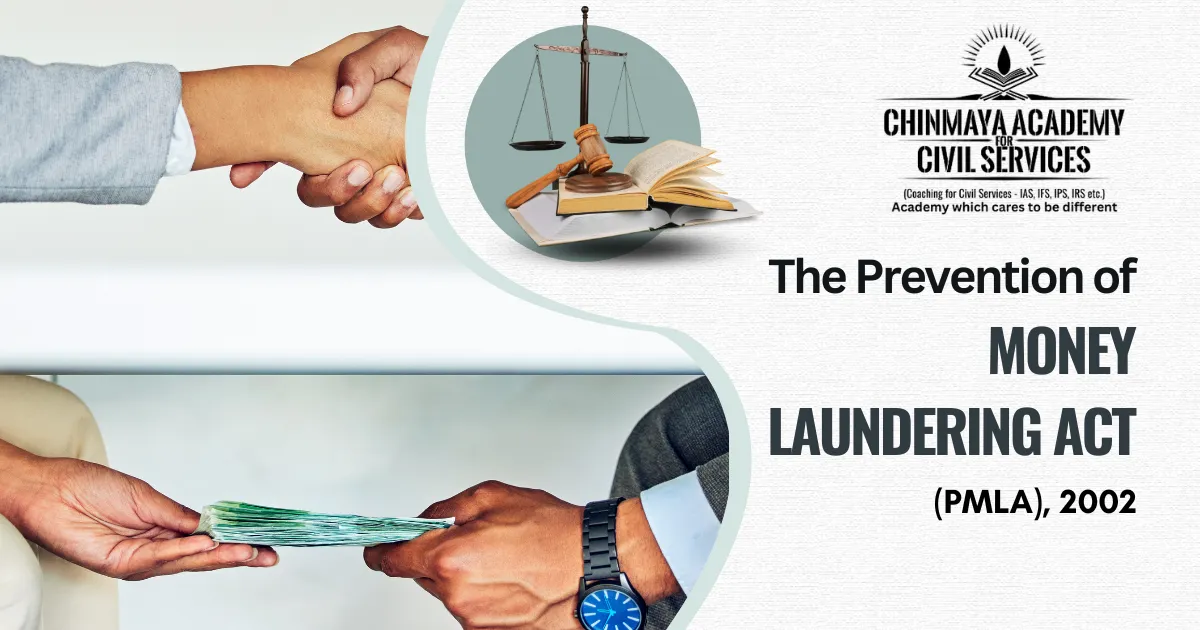
The Prevention of Money Laundering Act (PMLA), 2002, is a comprehensive legislation enacted by the Indian Parliament to combat money laundering and related activities. It aims to prevent the use of the financial system for the purpose of concealing or laundering proceeds of crime, to provide for the confiscation of property derived from, or involved in, money laundering, and to establish an institutional framework for combating money laundering.
Key Features
- Prevention of Money Laundering: The PMLA defines money laundering as the process of concealing or disguising the proceeds of crime and making them appear to have legitimate origin. It prohibits any person from indulging in any activity that constitutes money laundering. This includes:
-
- Concealing the proceeds of crime: This involves hiding, disguising, or transforming the proceeds of crime to make them appear to have a legitimate origin.
- Acquisition of proceeds of crime: This involves acquiring the proceeds of crime, knowing or having reason to believe that they are the proceeds of crime.
- Use of proceeds of crime: This involves using the proceeds of crime to purchase property, invest in businesses, or support other activities.
- Projecting proceeds of crime: This involves representing or claiming that the proceeds of crime are untainted property.
- Assistance in money laundering: This involves assisting or knowingly being involved in any process or activity connected with the proceeds of crime.
- Confiscation of Property: The PMLA empowers the authorities to confiscate property derived from, or involved in, money laundering. This includes:
-
- Proceeds of crime: The proceeds of crime, such as money, property, or other assets, obtained through illegal activities.
- Property used in money laundering: Property that has been used to commit money laundering, such as vehicles, real estate, or financial instruments.
- Property representing value of proceeds of crime: Property that represents the value of proceeds of crime, such as profits or gains made from illegal activities.
3. Establishment of Financial Intelligence Unit – India (FIU-IND): The FIU-IND is the central agency responsible for coordinating and monitoring efforts to combat money laundering in India. It collects, analyzes, and disseminates information related to suspicious financial transactions (SFTs) to various law enforcement agencies and regulators. This helps to identify and investigate potential money laundering cases.
4. Reporting of Suspicious Transactions: The PMLA mandates that banks, financial institutions, and other regulated entities report suspicious transactions to the FIU-IND. This includes transactions that are complex, unusual, large in value, or involve individuals or entities with a high-risk profile. The FIU-IND analyzes these reports and identifies potential money laundering cases for further investigation.
5. International Cooperation: The PMLA is in line with the international standards set by the Financial Action Task Force (FATF) on money laundering. India is an active member of the FATF and has implemented various measures to comply with its recommendations. This includes collaborating with other countries to exchange information on money laundering cases, freezing assets of criminals, and extraditing offenders.
6. Penalties for Money Laundering: The PMLA prescribes penalties for money laundering offenses. These penalties include:
-
- Rigorous imprisonment: Imprisonment for a period of not less than three years and may extend to seven years.
- Fine: A fine without any limit.
7. Additional Key Points:
-
- The PMLA is a dynamic law that has been amended several times since its enactment to address evolving money laundering trends and techniques.
- The PMLA has played a significant role in curbing money laundering activities in India. It has helped to protect the integrity of the financial system, safeguard public funds, and promote economic stability.
- The PMLA is an essential tool in the fight against organized crime and corruption. It has helped to disrupt criminal networks, recover stolen assets, and bring criminals to justice.
Impact
The Prevention of Money Laundering Act (PMLA), 2002, has had a significant impact on the prevention of money laundering in India. The Act has helped to:
- Reduce the flow of illicit funds: The PMLA has made it more difficult for criminals to launder their money through the formal financial system. This is due to the Act’s stringent reporting requirements and the establishment of the Financial Intelligence Unit – India (FIU-IND), which is responsible for investigating suspicious financial transactions.
- Recover proceeds of crime: The PMLA has helped to recover billions of rupees in proceeds of crime. This is due to the Act’s provisions for the confiscation of property derived from, or involved in, money laundering.
- Protect the integrity of the financial system: The PMLA has helped to protect the integrity of the Indian financial system by making it more difficult for criminals to use it to launder their money. This has helped to improve India’s reputation as a safe place to do business.
In addition to these direct impacts, the PMLA has also had a number of indirect impacts on the prevention of money laundering in India. These include:
- Increased awareness: The PMLA has raised public awareness of the issue of money laundering. This has helped to create a more supportive environment for law enforcement agencies to investigate and prosecute money laundering cases.
- Improved international cooperation: The PMLA has helped to improve India’s international cooperation in the fight against money laundering. India is now a member of a number of international organizations that are working to combat money laundering, and it has signed a number of bilateral and multilateral agreements on the issue.
As a result of these impacts, India has made significant progress in the fight against money laundering. However, there are still a number of challenges that need to be addressed.
Challenges
- The need for better enforcement: The PMLA needs to be more effectively enforced. This will require more resources for law enforcement agencies and the judiciary.
- The need for improved international cooperation: India needs to continue to work with its international partners to improve cooperation in the fight against money laundering. This includes sharing information and intelligence, and providing technical assistance to other countries.
- The need for public education: The public needs to be educated about the issue of money laundering and how they can help to prevent it. This includes reporting suspicious transactions to the authorities.
The Prevention of Money Laundering Act (PMLA), 2002, is a critical piece of legislation in India’s fight against financial crime. It has helped to protect the integrity of the financial system and safeguard the country’s economic interests.
It is a powerful tool in the fight against money laundering. However, it is only one tool in the toolbox. In order to effectively combat money laundering, India needs to take a comprehensive approach that includes prevention, detection, and prosecution.
 Chinmaya IAS Academy – Current Affairs Chinmaya IAS Academy – Current Affairs
Chinmaya IAS Academy – Current Affairs Chinmaya IAS Academy – Current Affairs
